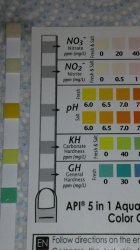rodders666
Fish Fanatic
Hi,
I closed all my tanks off due to a house move, now after a year I want to set up a single tank. It's 30*12*15 inch, around 85 litres. I have an external APS 1000ef filter (1000l/hr) which is huge for the tank but I always prefer over filtration).
The tank I have doesn't have a lid and has a clip on lighting system. I've seen lots like these and always thought they looked really nice.
My main issue is stocking as I've never had and open top tank before.
What fish should I definitely avoid, and what would be good fish for this type of tank.
The tank set up will be based on the fish, so at the moment I'm looking for ideas before I choose substrate etc.
Tank will be fully cycled before stocking.
I've heard Gouramis are a definite no for open tanks.
Thanks.
I closed all my tanks off due to a house move, now after a year I want to set up a single tank. It's 30*12*15 inch, around 85 litres. I have an external APS 1000ef filter (1000l/hr) which is huge for the tank but I always prefer over filtration).
The tank I have doesn't have a lid and has a clip on lighting system. I've seen lots like these and always thought they looked really nice.
My main issue is stocking as I've never had and open top tank before.
What fish should I definitely avoid, and what would be good fish for this type of tank.
The tank set up will be based on the fish, so at the moment I'm looking for ideas before I choose substrate etc.
Tank will be fully cycled before stocking.
I've heard Gouramis are a definite no for open tanks.
Thanks.




